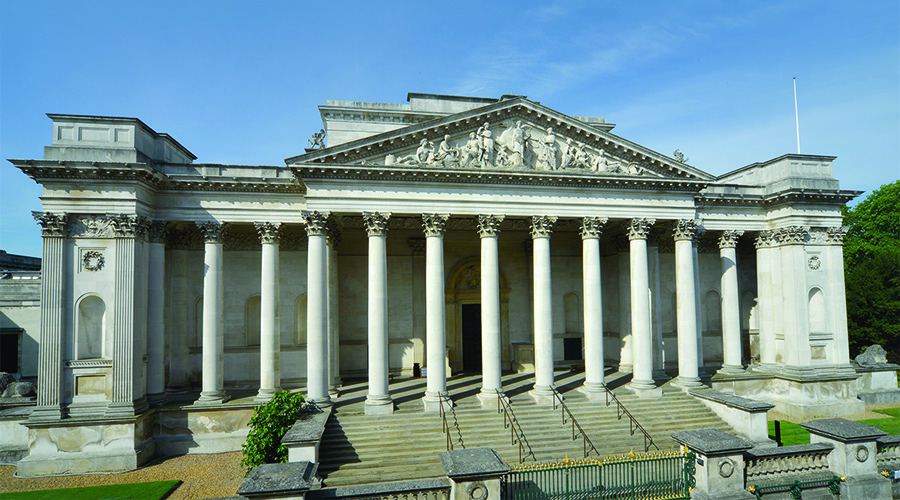We look back at the Fitzwilliam Museum’s fascinating history, plus plans to celebrate its bicentenary
The Fitzwilliam Museum is celebrating its bicentenary in 2016 with an entire year of events. We spoke to Dr Lucilla Burn, the museum’s keeper of antiquities, about the book she has spent the past two years researching and writing. It’s a beautifully produced definitive history of the Fitzwilliam and is now available to buy. She has also curated the Bicentenary Exhibition, which can be enjoyed throughout this year.
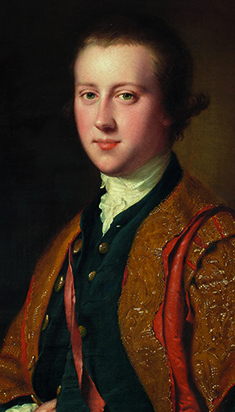
HISTORY
When Richard, VII Viscount Fitzwilliam of Merrion (right) bequeathed his works of art and library to the University of Cambridge in 1816, he also left £100,000 to build a museum to house them in. Many ideas for the site were offered up, including temples and even a Gothic church, but George Basevi, designer of Belgrave Square, won the bid, and his neoclassical masterpiece was chosen for the Trumpington Street site. 13 very different and individually fascinating directors have made numerous edits and additions to the building and its contents over the years, and the museum is now twice the size it was on its completion in 1848.
The collections have never stopped expanding too, with heavyweight benefactors and enthusiastic directors amassing an eclectic timeline of treasures. It has been Dr Burn’s two-year project to wrangle this trove of history and accompanying artefacts into the book and exhibition that is available to the public today. “I had three months leave to get started on the project in the autumn of 2012; after that I worked on it at intervals over the next two years, finishing early in 2015. I spent most of the three months’ research leave having a truly wonderful time reading through everything I could find either in our own Museum Archives or in the University Library… Then I plunged straight in and wrote one of the central chapters, which is about the Museum in the Second World War – I still think it’s the best!”
13 fascinating directors have made numerous edits and additions
Just a cursory flick through the book will set your imagination alight as the many diverse characters that have fermented into the museum we have today loom large and vivid. “I think I was most fascinated by uncovering the dynamic personalities of successive Fitzwilliam directors. Some of them, notably Sydney Cockerell, are relatively well known, but there are others, like Carl Winter (director 1946-66), about whom I had previously known very little and who did sterling work in getting the Museum on a proper professional footing after the Second World War, and emerges from his voluminous correspondence as extremely witty and acerbic.”
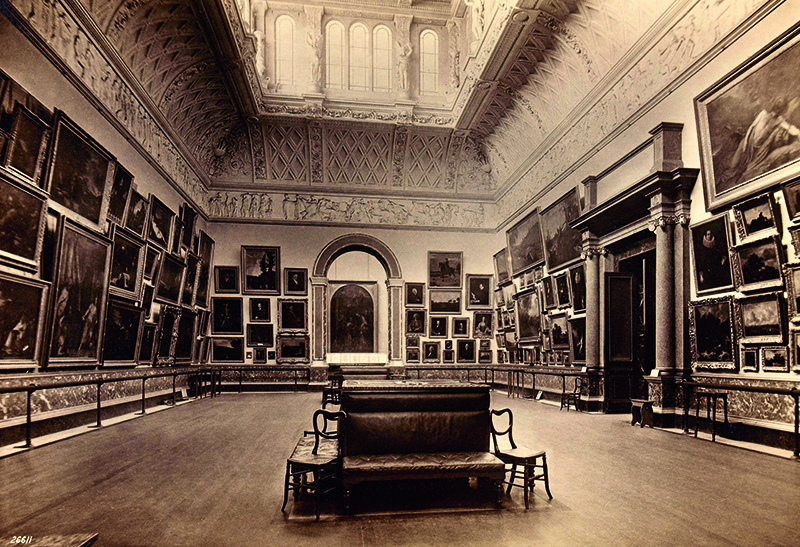
This image: Gallery 3 in the 19th century © Fitzwilliam Museum
The War Years
Aside from the defining personalities of the directors, there are wonderful insights into the working lives of employees, especially during wartime, when much of the museum was evacuated from Trumpington Street like children, to spend years of quiet safety in the countryside. One of the most vivid accounts of this period shines through the correspondence of employee Arthur Cousins, who reveals a deep passion for his vocation in his detailed descriptions of his duties, as well as a flair for poetic prose when he was caught in a snowstorm near Gredington, where his wards were being stored. It’s these touches that make the book sing and the museum come alive.
The collection was sensibly divided between various locations across the country, including Shropshire, Cornwall and Hertfordshire during the Second World War, but during the First World War it seems that just a few items were stored at the Ashmolean Museum. “The decision to evacuate was certainly debated, but records of the debates are rather discrete; there was national advice on the desirability of evacuation and this was followed. It was felt that the Museum was too near the East Coast not to be at risk of bombing or invasion.” The building was also protected, but by a skeleton staff due to subscription, and those who remained – mostly older men – did their part in fire-watching from the museum’s roof at night.
There are wonderful insights into the lives of employees
Their prudence was rewarded the right way with Cambridge, and its beloved museum, escaping largely unscathed from the bombing. “It was later rumoured that there was an unspoken pact whereby each side spared the other’s great universities, but I don’t know how true this was.” And although there was minor damage caused to some of the collection during its evacuation, nothing was lost.
Creating the Bicentenary Exhibition
The practical task of building the Bicentenary Exhibition became an opportunity for Dr Burn to channel the wealth of knowledge accumulated over her research. “Often a book is a by-product of an exhibition, but in this case the exhibition is the by-product of the book.”
It has presented a great opportunity to show off items that aren’t regularly shown. “I wanted to avoid using items that are normally on display elsewhere, because this was a chance to show additional objects rather than disrupt the permanent displays.” And when asked for some tips on her favourite pieces in the exhibition she is candid, “I’m particularly fond of the panel of Iznik tiles that was the first acquisition made by the Friends of the Fitzwilliam Museum in 1909. But what I really like are the juxtapositions that totally encapsulate the richness and variety of the Museum’s collections – the mahogany coin cabinet sitting on top of a Turkoman tent bag panel, or the brilliant neon-pink ceramic item, made in 2015, that nestles up close to a 2500-year-old Etruscan vase.”
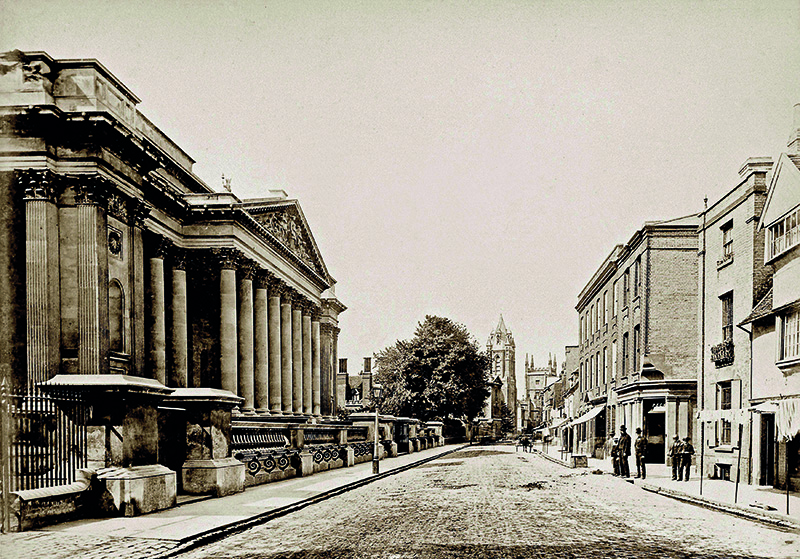
This image: The Fitzwilliam in the 19th century © Fitzwilliam Museum
The Future
While confident that the museum will spend the next 200 years in the same place, Dr Burn is clear about one thing, “We badly need more space – for displaying and storing the collections, but also for expanding our staff so we can realise the great potential of the collections for engaging both the public and the University. The key is to grow while maintaining the Museum’s distinctive character… I hope we can continue to preserve what’s good about our traditions while moving on to embrace the future!”
Bicentenary Programme Highlights
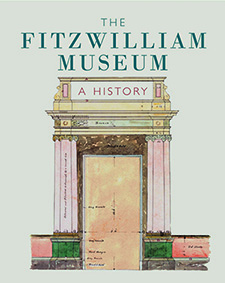
4 February to 30 December 2016: Celebrating the First 200 Years: The Fitzwilliam Museum 1816 – 2016. The Fitzwilliam’s Bicentenary exhibition, giving an introduction to the 200-year history of the Museum. Alongside the Bicentenary Exhibition there will be special displays in key Museum spaces from 4 February. These displays will show how the galleries looked in the past and the people from the Fitzwilliam’s history who were connected to these spaces.
23 February to 22 May 2016: Death on the Nile: Uncovering the afterlife of ancient Egypt. The first of two major exhibitions in the bicentenary year, exploring the Fitzwilliam’s fascinating collection of Egyptian coffins and the working practices of the artisans who made them. The collection began with one of the very first gifts that the Fitzwilliam received in 1822.
30 April 2016: Venus and the Lute Player – In partnership with Cambridge Early Music: This concert is inspired by the combination of instruments in Titian’s Venus and Cupid with a Lute Player from the Fitzwilliam’s founding collection. The programme of Italian Renaissance vocal and instrumental music is performed by members of the Northern Early Music Collective.
1 May 2016: Harpsichord recitals celebrating Lord Fitzwilliam’s life in music. Hear music for the harpsichord from the museum’s own collections with honorary keeper of music Dr Gerald Gifford. Selected music manuscripts from the collections will be going on display to accompany each recital too.
Object of the month: From Viscount Fitzwilliam’s student portrait and his treasured books to a terracotta statue of Handel and his musical manuscripts, a different treasure will be highlighted each month, including some surprises that have rarely or never before been on display. Each display is complemented by an online film interview with a curator available to view on the Museum’s website.
Best & Worst
We asked Lucilla Burns, what are the best and worst things about her job?
Best: “Perhaps what I like best of all are the opportunities I have for communicating with the public – whether through exhibitions or talks and lectures, or in writing.”
Worst: “Mondays, when the shutters are down, it’s dark and cold and the collections seem to sleep, waiting to be brought back to life by crowds of visitors next day.”
The Fitzwilliam Museum: A History is by Dr Lucilla Burns and is published by Philip Wilson Publishers.

